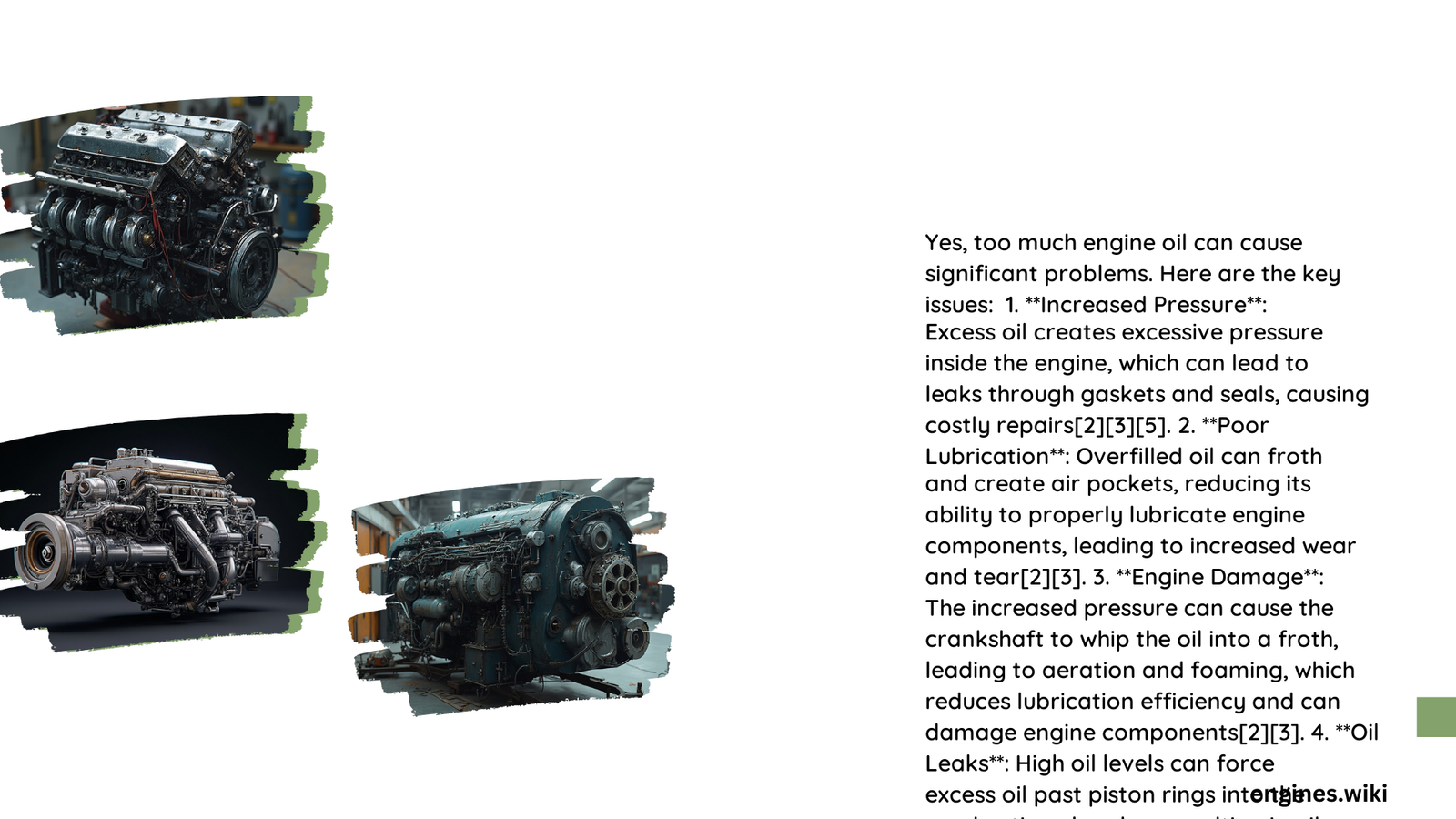Overfilling engine oil can lead to serious issues in your vehicle. Excess oil can cause increased pressure, foaming, and potential damage to critical engine components. This can result in reduced performance, oil leaks, and even catastrophic engine failure. Understanding the risks and symptoms of overfilled engine oil is crucial for maintaining your vehicle’s health and avoiding costly repairs.
What Are the Symptoms of Engine Oil Overfill?
Recognizing the signs of overfilled engine oil is essential for prompt action. Here are the key symptoms to watch out for:
- Check Engine Light: The increased oil pressure can trigger this warning light.
- White or Blue Smoke: Excessive oil burning in the engine produces distinctive exhaust smoke.
- Oil Leaks: High pressure forces oil past seals and gaskets.
- Reduced Engine Performance: Increased resistance in rotating components leads to power loss.
- Unusual Engine Noises: Knocking, tapping, or ticking sounds may occur due to inadequate lubrication.
How Does Overfilled Oil Affect Engine Components?

Excess oil can have detrimental effects on various engine parts:
- Crankshaft: It can whip the oil into a froth, causing aeration and foaming.
- Oil Seals and Gaskets: Increased pressure can damage these components, leading to leaks.
- Piston Rings: Excess oil can be forced past the rings into the combustion chamber.
| Component | Effect of Overfilled Oil |
|---|---|
| Crankshaft | Oil aeration and foaming |
| Seals/Gaskets | Potential damage and leaks |
| Piston Rings | Oil forced into combustion chamber |
What Are the Measurable Thresholds for Oil Overfill?
While there’s no universal standard, a general guideline is:
- Oil level 1.5 inches or more above the maximum fill line on the dipstick is considered severe overfilling.
Normal oil pressure typically ranges between 20-60 PSI (1.4-4.1 Bar) when the engine is running. Overfilling can cause pressure fluctuations, such as between 0 and 40 PSI, indicating a problem.
How Does Overfilled Oil Impact Vehicle Performance?
Excess oil can significantly affect your vehicle’s performance:
- Decreased Power: Increased resistance in rotating components reduces acceleration.
- Reduced Fuel Efficiency: The engine works harder, consuming more fuel.
- Potential Engine Failure: In severe cases, it can lead to catastrophic engine damage.
What Are the Long-Term Consequences of Oil Overfill?
If not addressed promptly, overfilled oil can lead to:
- Engine Failure: Increased wear and tear, potentially resulting in complete engine breakdown.
- Catalytic Converter Damage: Oil burning in the combustion chamber can contaminate and damage this crucial emissions control device.
How Much Does It Cost to Fix Oil Overfill-Related Issues?
The costs can vary depending on the extent of the damage:
- Seal and Gasket Replacement: $100 to $500 or more
- Engine Overhaul or Replacement: $2,000 to $5,000 or more in severe cases
How Can You Prevent Oil Overfill?
To avoid the problems associated with overfilled engine oil:
- Follow manufacturer guidelines for oil capacity.
- Use the dipstick to check oil levels accurately.
- Add oil gradually, rechecking the level frequently.
- If unsure, consult a professional mechanic.
What Should You Do If You’ve Overfilled Your Engine Oil?
If you suspect you’ve added too much oil:
- Don’t start the engine if possible.
- Check the oil level using the dipstick.
- Drain the excess oil if the level is above the maximum mark.
- If the engine has been run, inspect for signs of damage and consult a mechanic if necessary.
Remember, maintaining the correct oil level is crucial for your engine’s health and longevity. Regular checks and proper maintenance can prevent the serious issues caused by overfilled engine oil.
References:
1. https://shieldoils.com/what-happens-if-you-overfill-your-vehicle-with-engine-oil-how-to-fix-it/
2. https://community.cartalk.com/t/overfilling-oil-worst-case-scenario/53642
3. https://www.jdpower.com/cars/shopping-guides/what-happens-when-you-put-too-much-oil-in-your-car/
